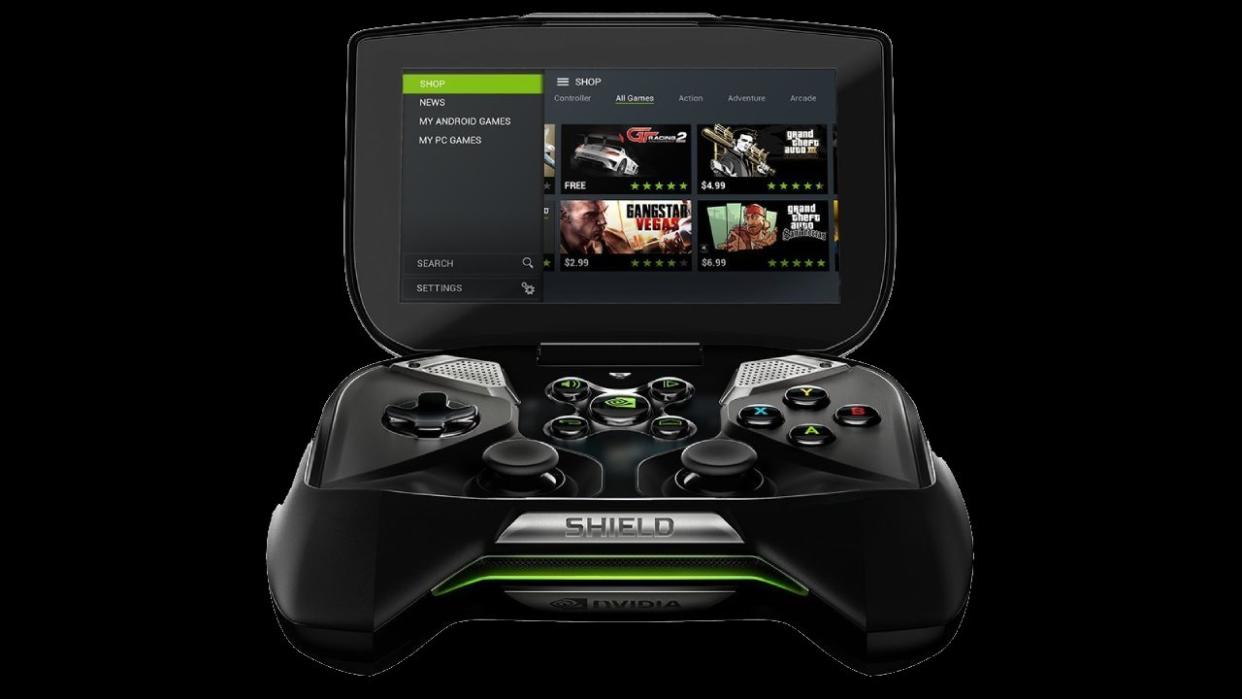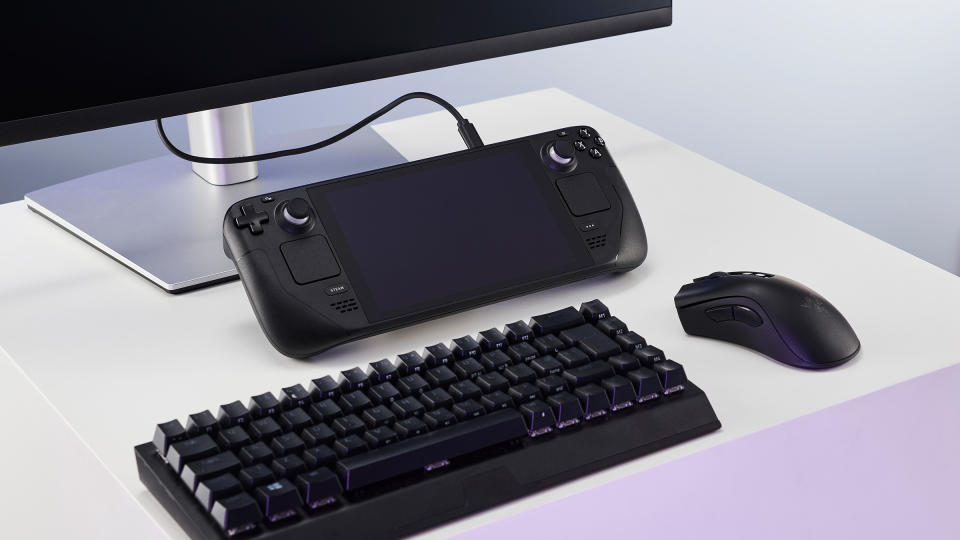Nvidia could be teaming up with MediaTek to create a Steam Deck-busting handheld gaming chip

A few days ago we reported on news that Nvidia and MediaTek are set to release a new Arm-based chip for laptop PCs designed to cash in on the AI boom and compete with everything from traditional Intel and AMD APUs right through to the new Qualcomm Snapdragon X Elite. Well, now there's a rumour that Nvidia and MediaTek are also cooking up a chip specifically designed for handheld gaming PCs.
Potentially, this is epic news. There's absolutely no doubting the Arm instruction set makes for more efficient chips. Some recent leaked data from Dell indicates that its new laptops with the Arm-based Qualcomm X Plus chip will offer nearly double the battery life of their traditional x86 equivalents.
Without a doubt, one of the weakest aspects of current gaming handhelds is poor battery life. At the same time, Nvidia graphics currently can't be had in a handheld beyond the OG Nintendo Switch. So, the prospect of Arm-based efficiency and Nvidia graphics in a handheld is pretty compelling.
You could imagine something much faster than the AMD Phoenix APU used by all the current handhelds du jour, including the Asus RoG Ally and Lenovo Legion Go, and with much better battery life. Add in DLSS upscaling, much better ray tracing, and the result would surely be a big, fat yes please.
For now, this is nothing more than a rumour from an X user self-styled as a "GPU veteran". But MediaTek and Nvidia have form and are currently producing chips for cars with Arm cores and Nvidia graphics and AI blocks.
Of course, the Nintendo Switch uses an Nvidia Tegra X1 which has four Arm-design cores combined with Nvidia Maxwell-era graphics. And Nvidia's own Shield handheld (shown above) and Shield TV devices combined off-the-shelf Arm cores with Nvidia graphics.
The immediate questions that follow are why Nvidia would work with MediaTek on such a chip and exactly what kind of Arm cores might it have? It's hard to be sure on either count.
MediaTek certainly has a strong track record of selling chips for mobile devices, so there may be established relationships there that Nvidia wants to lean on and maybe even an attempt to get its GPU tech into phones. It might simply be cheaper and easier to let Mediatek do the donkey work of fitting out the chip with generic Arm cores and then selling it to device makers.
After all, Nvidia is pretty busy with its booming AI business and awash with cash. So you can understand why the company might prefer to pay MediaTek to a cook up a handheld gaming SoC with Nvidia IP, and then handle all the supply chain, firmware, and platform issues.
On the other hand, an Nvidia chip for handhelds that didn't just have Nvidia graphics but also some fancy, bespoke Arm CPU cores rather than the generic core designs Arm itself licences could be a lot more interesting. MediaTek doesn't have much of a track record for developing its own Arm cores. So, that task would presumably fall to Nvidia, at which point you're back to wondering why Nvidia needs MediaTek.
More on the Steam Deck

Steam Deck OLED review: Our verdict on Valve's handheld.
Best Steam Deck accessories: Get decked out.
Steam Deck battery life: What's the real battery life?
Best handheld gaming PC: What's the best travel buddy?
So, the simple fact of MediaTek-Nvidia alliance would imply off-the-shelf Arm cores. If that sounds disappointing, rumour has it Arm's next-gen Cortex X5 CPU cores are a big step forward and could be very competitive with everything from the Qualcomm Snapdragon X Elite's cores to anything Intel and AMD can offer.
Moreover, if MediaTek and Nvidia are working together on an AI PC chip for laptops using those Arm X5 cores plus an Nvidia AI NPU and graphics, well, it might not take a great deal of effort and investment to turn that into a compelling SoC for handheld gaming devices.
To tie this together, Nvidia and MediaTek have publicly announced a joint-venture SoC with Arm cores and Nvidia GPU and AI blocks. It's not a huge jump from there to a similar chip optimised for laptops. And once you've got that it's relatively small beer to make something for gaming handhelds.
Of course, that all covers the hardware. Getting the software and especially games running well is a whole different can of worms. But if any company has the resources, technical know-how, and industry relationships to get PC games running nicely on Arm chips, it's got to be Nvidia, right? Watch this space, things are looking seriously exciting for PC hardware over the next year or two.

